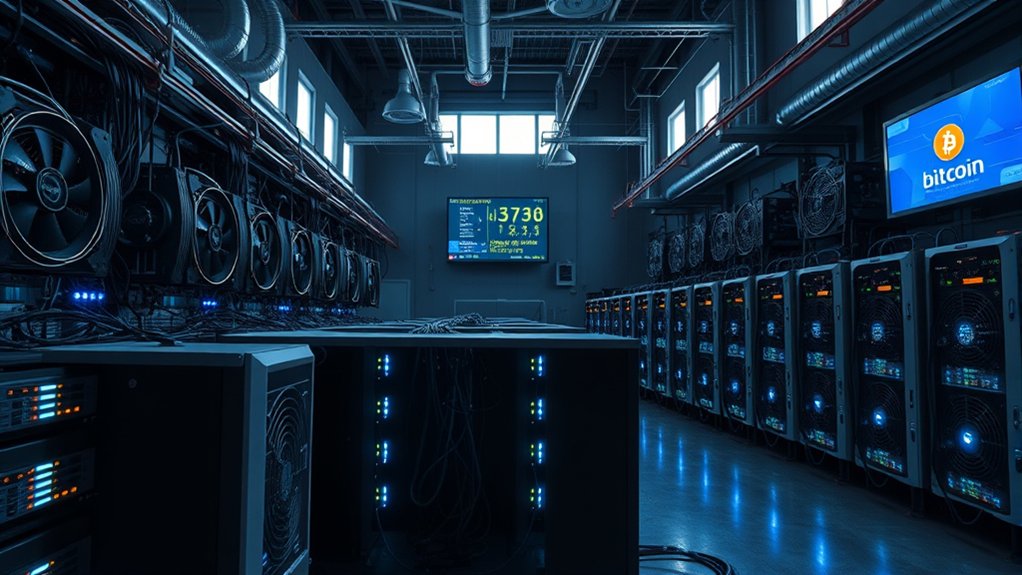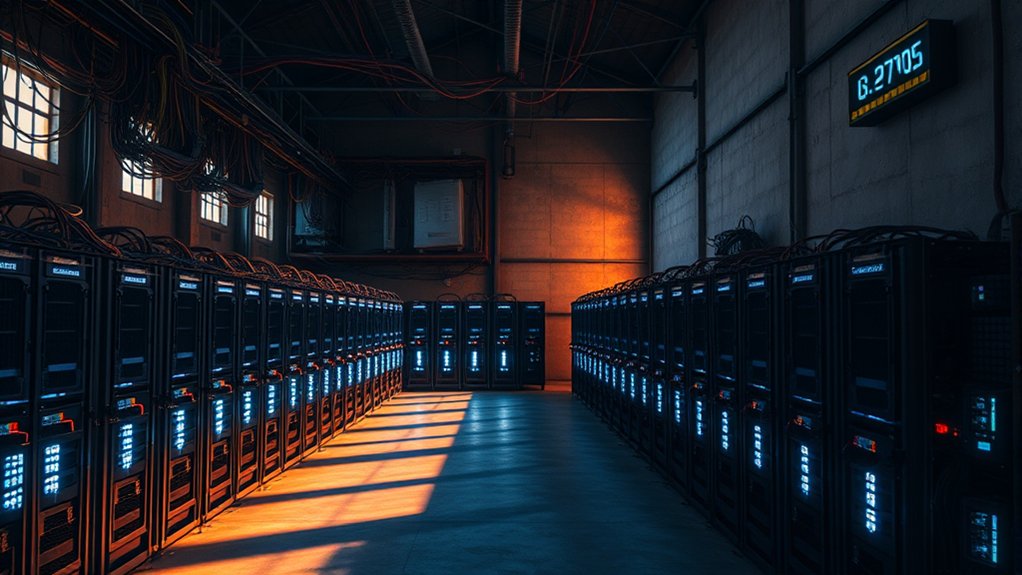Is Bitcoin mining still worth it in 2025? Well, it’s a mixed bag. Sure, some big players are raking in cash, but mining costs are soaring. If you can keep electricity under $0.05 per kilowatt-hour, maybe you stand a chance. However, the competition is fierce, and hardware is getting pricey. Plus, every halving event messes with profits. It’s risky business, and a lot of factors are in play. But stick around, there’s more to uncover.

Is Bitcoin mining still worth it? As 2025 approaches, that question hangs in the air like a cloud of uncertainty. Profitability is expected to hold steady, according to Canaccord Genuity. But let’s get real—large miners are shelling out around $27,000 just to mine a single bitcoin. That’s not pocket change.
The industry is booming, raking in billions, with big players expanding their operations. Meanwhile, Bitcoin halving events keep the excitement alive, often spiking demand. But here’s the kicker: you need to adapt to new tech to stay ahead.
Electricity costs are the lifeblood of mining. Miners need that sweet, cheap energy—ideally below $0.05 per kilowatt-hour. If you’re paying more, good luck turning a profit. Large-scale operations with access to cheap energy are likely to remain profitable even as costs rise.
Electricity costs are crucial; miners thrive on cheap energy, ideally under $0.05 per kilowatt-hour to keep profits flowing.
Then there’s mining difficulty, which adjusts based on the network’s hash rate. More competition means you might need to upgrade your hardware, and good luck finding a high-performance ASIC miner for under $5,000 these days. And don’t forget about Bitcoin price volatility; profits can swing wildly based on market sentiment.
Now, let’s talk tech. Manufacturers like Bitmain and Canaan are cranking out more efficient hardware, but it’s a race against time. S19 generation miners may not be viable by 2026, but newer models are expected to maintain efficiency. With the right cooling systems and renewable energy sources, miners can cut costs and, let’s be honest, save the planet a bit too. Proper storage in digital wallets is also essential to prevent theft and loss of mined Bitcoin.
But there are economic factors at play. Halving events reduce rewards, yet they also drive up Bitcoin’s scarcity—hello, price surges!
Still, miners need to manage their operational costs like a hawk. So, is mining worth it in 2025? It’s complicated, folks. The landscape is shifting, and for those willing to adapt, maybe—just maybe—it will be a lucrative endeavor. Or, it could just be a fancy way to lose money. Who’s to say?
Frequently Asked Questions
What Are the Environmental Impacts of Bitcoin Mining?
Bitcoin mining is a wild ride for the environment.
Imagine this: it guzzles about 63 TWh of electricity yearly—enough to power a whole country.
Emissions? Roughly 22 million metric tons of CO2 annually. That’s like driving a car thousands of kilometers for each transaction!
Water usage is no joke either, harming local wildlife.
Sure, some miners are going green, but the damage is already done.
Oh, the irony!
How Does Bitcoin Mining Affect the Global Economy?
Bitcoin mining is like a rollercoaster for the global economy. It adds billions to GDP, creates jobs, and even supports rural towns. Pretty impressive, right?
But hold on—it’s not all sunshine and rainbows. Market volatility can flip everything upside down. Governments are constantly playing a game of whack-a-mole with regulations.
Still, miners invest in renewable energy, making them somewhat eco-friendly. So, it’s a mixed bag, with profits swinging wildly. Buckle up!
Are There Any Legal Regulations for Bitcoin Mining?
Bitcoin mining isn’t a free-for-all. Legal regulations are everywhere. Some countries embrace it like a long-lost friend, while others slam the door shut.
China? Total ban. Others, like El Salvador, roll out the welcome mat.
But watch out! Compliance costs can eat into profits faster than a hungry teenager at a pizza party.
Environmental concerns? Yep, those are creeping in too. So, miners better know the rules or risk getting burned—literally and figuratively.
What Hardware Is Best for Bitcoin Mining in 2025?
In 2025, the best hardware for Bitcoin mining is all about those ASIC miners.
They’re the kings. High hash rates, like the MicroBT WhatsMiner M63S, crush the competition.
Sure, they suck up power—5360 watts, anyone?—but that’s the price of efficiency.
Prices for these gadgets can swing wildly, so buckle up. New models pop up yearly, too.
Keep your wallet ready; staying competitive is no walk in the park!
Can I Mine Bitcoin on My Personal Computer?
Sure, one could try to mine Bitcoin on a personal computer.
But let’s be real: it’s like bringing a rubber band to a gunfight. Personal computers just can’t compete with specialized ASIC machines.
They’re slow, use too much power, and might even cost more in electricity than the Bitcoin earned.
So, unless one enjoys losing money and watching their computer overheat, it’s probably not the best idea.
Just saying.





